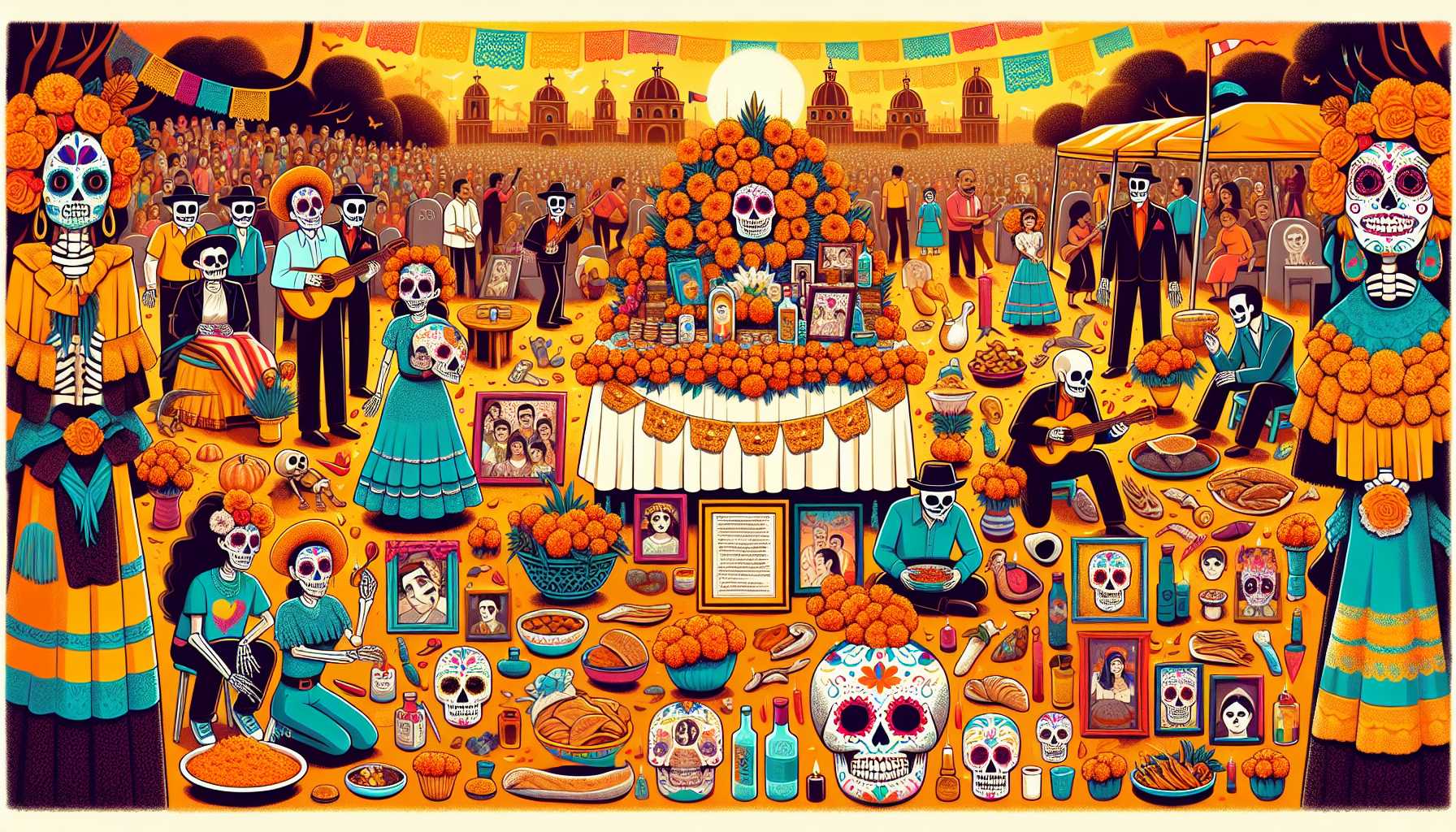
The Vibrant Traditions of Dia de los Muertos Celebrations
The Day of the Dead (Día de los Muertos) is a vibrant Mexican tradition celebrated primarily on November 1st and 2nd, honoring deceased loved ones.
Il Giorno dei Morti (Día de los Muertos) è una vivace tradizione messicana celebrata principalmente il 1° e il 2° novembre, in onore dei cari defunti.
This colorful festival combines indigenous beliefs with Catholic influences, creating a rich tapestry of rituals and customs.
Questa colorata festa combina credenze indigene con influenze cattoliche, creando un ricco arazzo di rituali e usanze.
Families create altars (ofrendas) adorned with photos, favorite foods, and mementos of the departed to invite their spirits back for a day of reunion.
Le famiglie creano altari (ofrendas) adornati con foto, cibi preferiti e ricordi dei defunti per invitare i loro spiriti a tornare per un giorno di riunione.
During the festivities, communities gather to honor and remember those who have passed, often visiting cemeteries to clean graves and decorate them with flowers, especially marigolds, which symbolize death and the celebration of life.
Durante le festività, le comunità si riuniscono per onorare e ricordare coloro che sono passati, visitando spesso i cimiteri per pulire le tombe e decorarle con fiori, specialmente i tageti, che simboleggiano la morte e la celebrazione della vita.
The holiday features lively parades, music, dance, and the iconic sugar skulls, all of which contribute to the joyful remembrance of the deceased.
La festa presenta parate vivaci, musica, danza e le iconiche teschi di zucchero, tutti elementi che contribuiscono al gioioso ricordo dei defunti.
Overall, Día de los Muertos is a time for celebration rather than sorrow, emphasizing the continuity of love and connection between the living and the dead.
In generale, il Día de los Muertos è un momento di celebrazione piuttosto che di dolore, sottolineando la continuità dell'amore e del legame tra i vivi e i morti.
It showcases Mexico's unique cultural heritage and serves as a reminder of the importance of family, memory, and the cycle of life and death.
Mette in mostra l'unico patrimonio culturale del Messico e serve da promemoria dell'importanza della famiglia, della memoria e del ciclo della vita e della morte.
Based on this article
